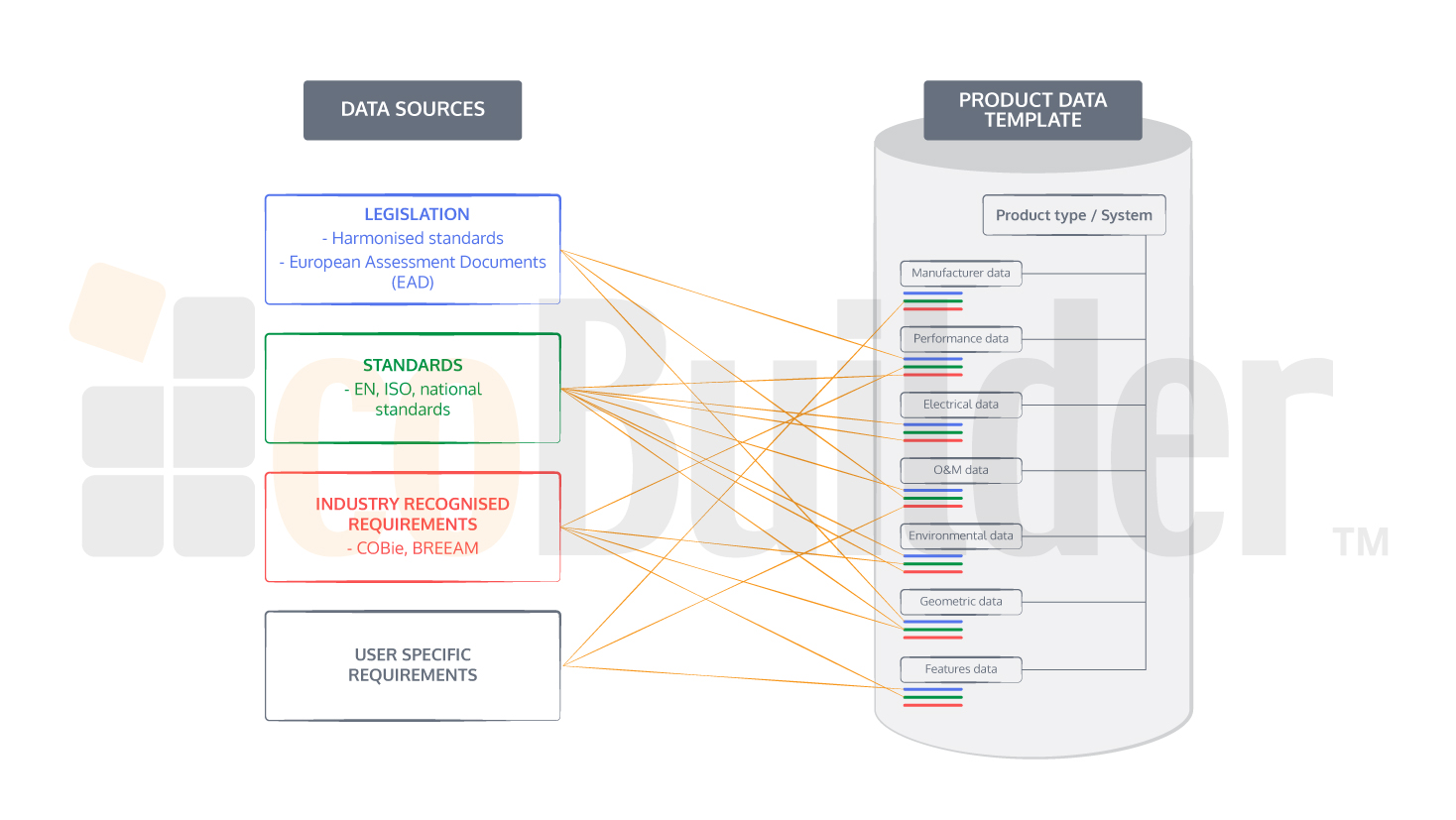Product Data Template
Contents |
[edit] What is a Product Data Template?
A Product Data Template is a common data structure defining the ‘properties’ (essential and non-essential product characteristics such as fire rating and colour) that describe any type of product in a way that can be traced to a credible source.
Such credible sources are product standards declaring the performance characteristics of products and the methods they should be tested against. There is a specific hierarchy of credible data sources taken into account in the PDT structure. Legal data sources such as European Harmonised standards are given greater priority than national standards which have greater priority than industry and user recognised requirements (like BREEAM or COBie).
This is how Product Data Templates are created to serve as a common framework for anyone to use to manage construction product related data.
Product Data Templates are especially useful for manufacturers who can populate them with the most up-to-date and accurate information about their products. Once complete, this populated template is called a Product Data Sheet (PDS).
[edit] Who develops the methodology for creating PDTs?
International standardisation bodies CEN and ISO are developing a series of standards to cover the methodology for creating Product Data Templates. As these standards are planned to be officially published by the beginning of 2019, companies currently develop Product Data Templates based on a general European construction industry consensus and the draft standards currently in development by the CEN technical committee 442, Work group 4 looking at product dictionaries and templates.
NB The Code for Construction Product Information, Version 1.0, published by CCPI in September 2021 defines a Product Data Templates (PDT) as: ‘A structured collection of properties that describe a specific product or product type.’
It defines a Product Data Sheets (PDS) as a populated PDT.
[edit] Data templates
Digitisation for construction product manufacturers: a plain language guide, published by the Institution of Engineering and Technology (IET) in 2021 states: ‘A data template is a subset of properties about a construction object. Once a data template is agreed upon for a product, it allows information about any similar products to be compared and shared as machine readable data, and by translation through a user interface (for example, a web page), by a human being. It’s worth noting that the term “product data template (PDT)” is no longer defined in the standards. Data templates apply to products, systems and assemblies etc.’
[edit] Related articles on Designing Buildings
[edit] External reference
Featured articles and news
The UK's Modern Industrial Strategy: A 10 year plan
Previous consultation criticism, current key elements and general support with some persisting reservations.
Building Safety Regulator reforms
New roles, new staff and a new fast track service pave the way for a single construction regulator.
Architectural Technologist CPDs and Communications
CIAT CPD… and how you can do it!
Cooling centres and cool spaces
Managing extreme heat in cities by directing the public to places for heat stress relief and water sources.
Winter gardens: A brief history and warm variations
Extending the season with glass in different forms and terms.
Restoring Great Yarmouth's Winter Gardens
Transforming one of the least sustainable constructions imaginable.
Construction Skills Mission Board launch sector drive
Newly formed government and industry collaboration set strategy for recruiting an additional 100,000 construction workers a year.
New Architects Code comes into effect in September 2025
ARB Architects Code of Conduct and Practice available with ongoing consultation regarding guidance.
Welsh Skills Body (Medr) launches ambitious plan
The new skills body brings together funding and regulation of tertiary education and research for the devolved nation.
Paul Gandy FCIOB announced as next CIOB President
Former Tilbury Douglas CEO takes helm.
UK Infrastructure: A 10 Year Strategy. In brief with reactions
With the National Infrastructure and Service Transformation Authority (NISTA).
Ebenezer Howard: inventor of the garden city. Book review.
The Grenfell Tower fire, eight years on
A time to pause and reflect as Dubai tower block fire reported just before anniversary.
Airtightness Topic Guide BSRIA TG 27/2025
Explaining the basics of airtightness, what it is, why it's important, when it's required and how it's carried out.
Construction contract awards hit lowest point of 2025
Plummeting for second consecutive month, intensifying concerns for housing and infrastructure goals.
Understanding Mental Health in the Built Environment 2025
Examining the state of mental health in construction, shedding light on levels of stress, anxiety and depression.






















